Varieties
I - Self
Silver (si)
a/a B/* C/* d/d p/p (pink eyed)
a/a B/* cch/c d/d P/*, possibly a/a bc/* cch/c ln/ln P/* (black eyed, bes)
"This is a delicate shade, as near as possible to an old silver coin. It should be sufficiently solid to leave no doubt of it being a Self. Eye pink."
Breeding information below the pictures.
Silver: |
|
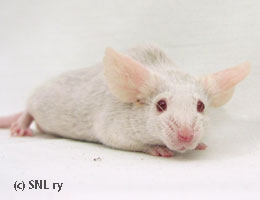
|
As you can see, silver is quite a delicate, light colour. It should not be too light as to be mistaken for white and should always have blue undercolour, giving depth to the colour but not showing through. This mouse has a somewhat uneven colouring and could pass for a light dove, though. SH silver buck Hyde Park |
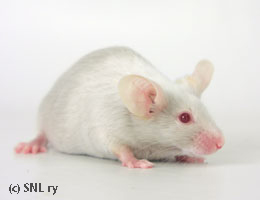
|
SHS silver doe Rapunzel's Silver Dove |
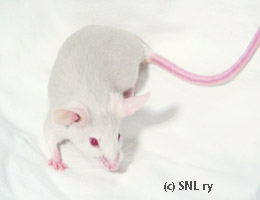
|
SH silver doe Rapunzel's Identity Crisis |
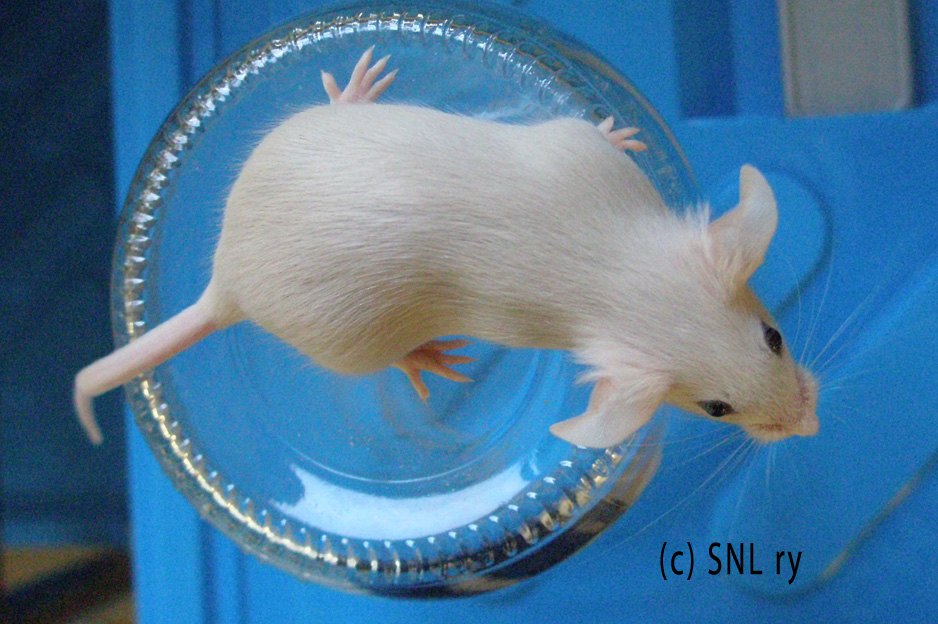
|
Sh silver doe Astralis Silver Bay (click the pic for a larger image) |

|
Lhs silver buck Rapunzel's Marco Polo Note the darker undercolour. (click the pic for a larger image) |
Black eyed silver: |
|
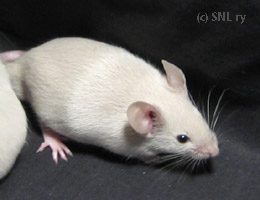
|
Note: This article is old and waiting to be rewritten.
Quick Look
Pink eyed silver is genetically a pink- eyed blue and also comes in variety of shades. Strictly speaking silver isn't a self, as the root of the hair is bluish. This undercolour shouldn't show unless the coat is blown back. Best outcross would be the PEW, but beware of using PEW's with champagne background as this ruins the ice-blue cast. Silvers may suffer from light noses and tail set-ons, which should be bewared when breeding silvers. Dove may be used as an outcross, using similar caution as with outcrosses in general. Black eyed silvers are very rare and there is some controversy if it really is genetically possible. However, there is evidence that black eyed silvers are in fact Lilacs selectively bred to be very light.
Black Eyed Silver
Text: Anniina Tuura (transl. Satu Karhumaa)
The mere possibility of there being a black eyed silver has brought on many a debate. Those who have dismissed the variety as an "impossibility", have been stuck in the thought that the only way to dilute a blue into silver is with the pink eye dilution p/p.
After noting the effect of cch/c on black, I deducted that combining this genotype with a blue mouse the resulting phenotype could be a black eyed silver. The theory was tested with a blue Burmese x C/c blue cross. As a result, I got a black eyed silver with the overall colouration resembling that of an "ordinary" silver. As the effect of cch/c is slighter on the colour of the mouse's skin pigment than that of p/p, the black eyed silver can look like it has slight points (translator's note: the chinchilla gene is slightly acromelanic, which is why some cch/* genotypes tend to develop weak points.) Whereas the extremities of a silver are pink, those of a black eyed silver are coloured.
It is impossible to get a black eyed silver tan with cch/c, as the tan belly is diluted into white. However, unlike with p/p silver, a silver fox is possible. at/* B/* cch/cch d/d p/p is PEW in phenotype. In order to get silver fox, one only needs to add the black-and-tan gene to the black eyed silver.
It may be possible to get black eyed silvers by selectively breeding chinchillated lilacs into having ever lighter colouration. However, these would probably suffer from brownish tinge.
